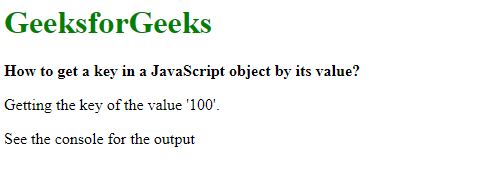Javascript Generate Dynamic Key Values In An Object
Posted : admin On 16.04.2020In JavaScript, objects are king. If you understand objects, you understand JavaScript.
- Javascript Build Dynamic Object
- Javascript Generate Dynamic Key Values In An Object Worksheet
- Js Dynamic Object Key
In JavaScript, almost 'everything' is an object.
- Booleans can be objects (if defined with the
newkeyword) - Numbers can be objects (if defined with the
newkeyword) - Strings can be objects (if defined with the
newkeyword) - Dates are always objects
- Maths are always objects
- Regular expressions are always objects
- Arrays are always objects
- Functions are always objects
- Objects are always objects
- Object.values returns an array whose elements are the enumerable property values found on the object. The ordering of the properties is the same as that given by looping over the property values of the object.
- JavaScript Objects. ❮ Previous Next ❯. In real life, a car is an object. A car has properties like weight and color, and methods like start and stop: All cars have the same properties, but the property values differ from car to car. All cars have the same methods, but the methods are performed at different times.
- How can I dynamically create keys in javascript associative arrays? All the documentation I've found so far is to update keys that are already created: arr'key' = val; I have a string like t.
All JavaScript values, except primitives, are objects.
JavaScript Primitives
Aug 24, 2017 Objects in JavaScript are standalone entities that can be likened to objects in real life. For example, a book might be an object which you would describe by the title, author, number of pages, and genre. Similarly, a car might be an object that you would describe by the color, make.
A primitive valueCorel draw x6 activation key generator online. is a value that has no properties or methods.
A primitive data type is data that has a primitive value.
JavaScript defines 5 types of primitive data types:
stringnumberbooleannullundefined
Primitive values are immutable (they are hardcoded and therefore cannot be changed).
if x = 3.14, you can change the value of x. But you cannot change the value of 3.14.
| Value | Type | Comment |
|---|---|---|
| 'Hello' | string | 'Hello' is always 'Hello' |
| 3.14 | number | 3.14 is always 3.14 |
| true | boolean | true is always true |
| false | boolean | false is always false |
| null | null (object) | null is always null |
| undefined | undefined | undefined is always undefined |
Objects are Variables
JavaScript variables can contain single values:
Example
Try it Yourself »Objects are variables too. But objects can contain many values.
The values are written as name : value pairs (name and value separated by a colon). Dark web product key generater.
Example
A JavaScript object is a collection of named values
Object Properties
The named values, in JavaScript objects, are called properties.
| Property | Value |
|---|---|
| firstName | John |
| lastName | Doe |
| age | 50 |
| eyeColor | blue |
Objects written as name value pairs are similar to:
- Associative arrays in PHP
- Dictionaries in Python
- Hash tables in C
- Hash maps in Java
- Hashes in Ruby and Perl
Object Methods
Methods are actions that can be performed on objects.
Object properties can be both primitive values, other objects, and functions.

An object method is an object property containing a function definition.
| Property | Value |
|---|---|
| firstName | John |
| lastName | Doe |
| age | 50 |
| eyeColor | blue |
| fullName | function() {return this.firstName + ' ' + this.lastName;} |
JavaScript objects are containers for named values, called properties and methods.
You will learn more about methods in the next chapters.
Creating a JavaScript Object
With JavaScript, you can define and create your own objects.
There are different ways to create new objects:
- Define and create a single object, using an object literal.
- Define and create a single object, with the keyword
new. - Define an object constructor, and then create objects of the constructed type.
In ECMAScript 5, an object can also be created with the function Object.create().
Using an Object Literal
This is the easiest way to create a JavaScript Object.
Using an object literal, you both define and create an object in one statement.
An object literal is a list of name:value pairs (like age:50) inside curly braces {}.
The following example creates a new JavaScript object with four properties:
Example
Spaces and line breaks are not important. An object definition can span multiple lines:
Example
firstName: 'John',
lastName: 'Doe',
age: 50,
eyeColor: 'blue'
};
Using the JavaScript Keyword new
The following example also creates a new JavaScript object with four properties:
Example
person.firstName = 'John';
person.lastName = 'Doe';
person.age = 50;
person.eyeColor = 'blue';
The two examples above do exactly the same. There is no need to use new Object().
For simplicity, readability and execution speed, use the first one (the object literal method).
JavaScript Objects are Mutable
Objects are mutable: They are addressed by reference, not by value.

If person is an object, the following statement will not create a copy of person:
The object x is not a copy of person. It is person. Both x and person are the same object.
Any changes to x will also change person, because x and person are the same object.
Javascript Build Dynamic Object
Example
Javascript Generate Dynamic Key Values In An Object Worksheet
var x = person;
x.age = 10; // This will change both x.age and person.age